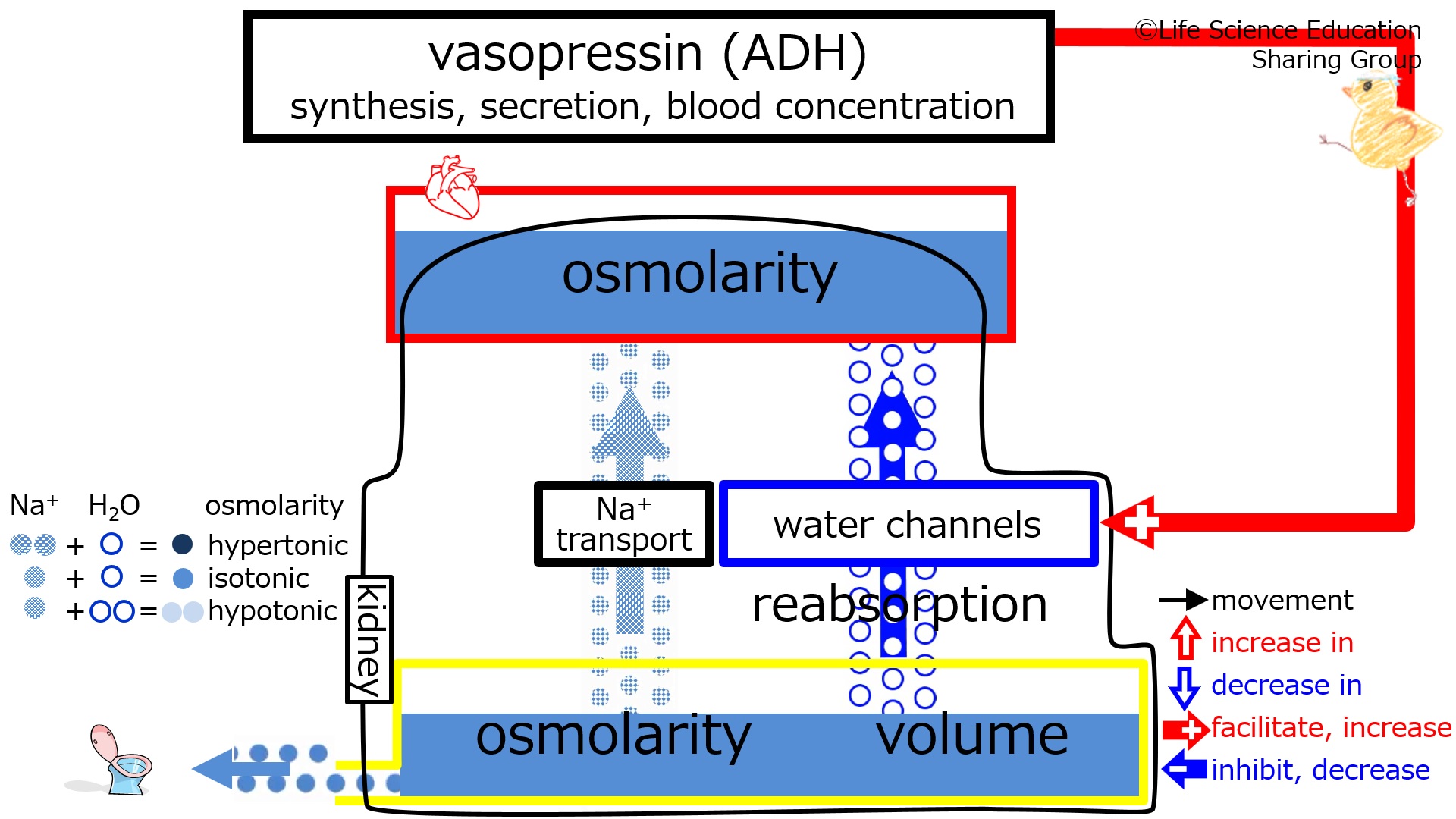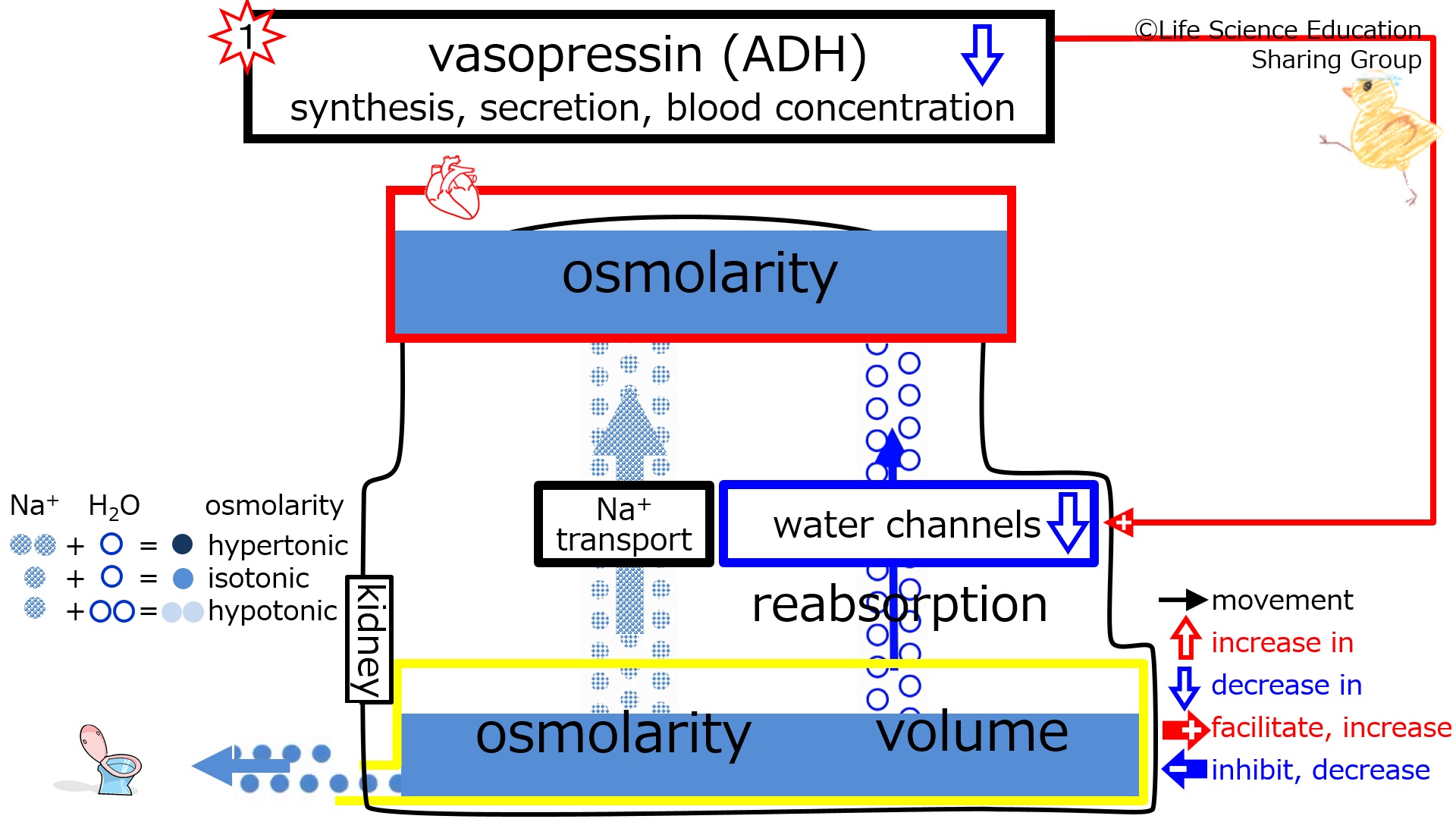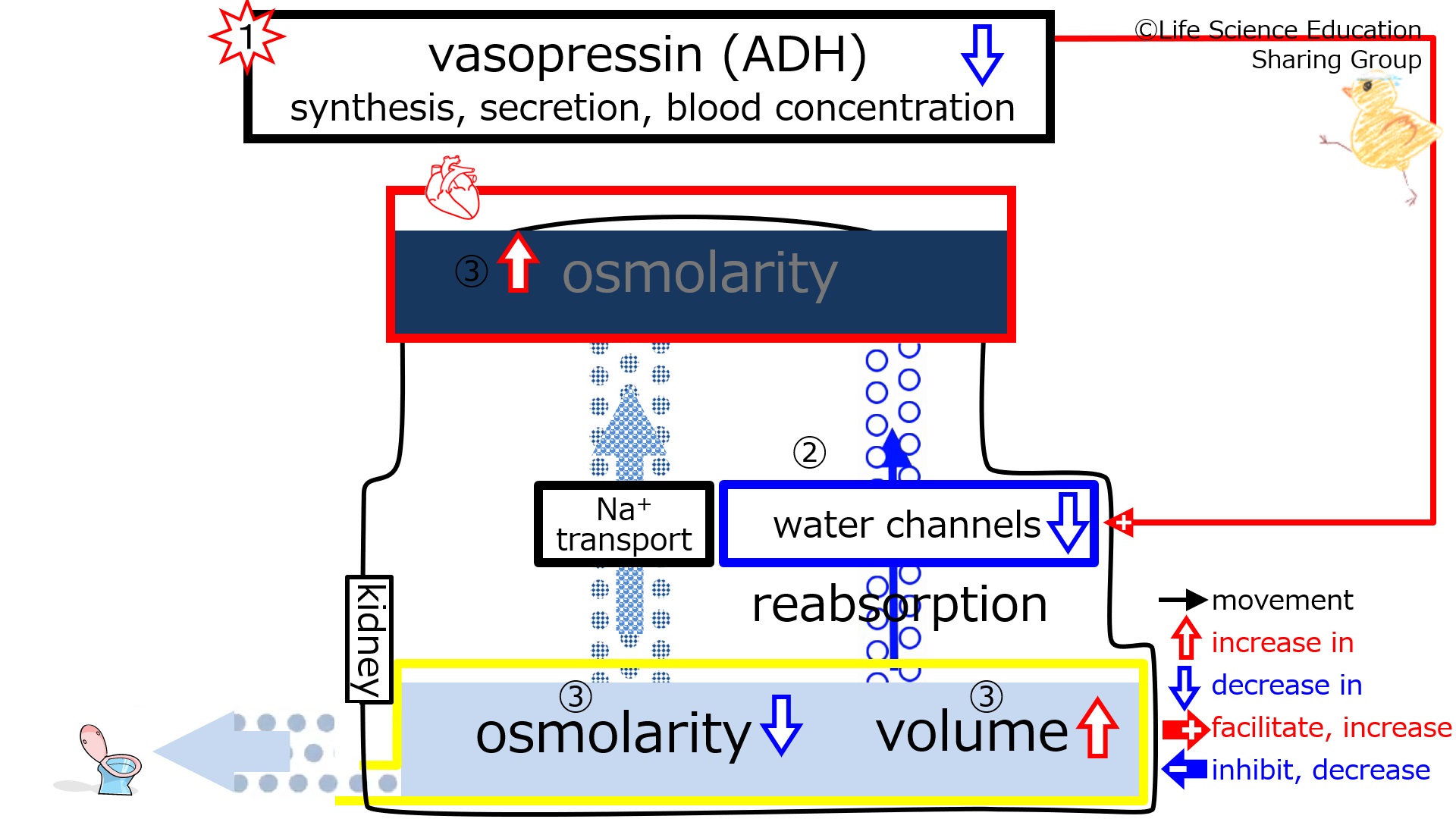SHolroydAtWeilCornellMedQatar/Urology/Kidney/Tubules/WaterReabsorption/EffectOfDecrease
| With the decrease in the synthesis, secretion, and blood concentration of vasopressin (anti-diuretic hormone, ADH), the number of water channels decreases . |
video prior to the decrease in vasopressin (ADH)
Prior to vasopressin (ADH) decreasing (at baseline), we will make the assumption that the subject is in homeostasis with normal plasma and urine osmolarities (isotonic) and volumes.
video just after the decrease in vasopressin (ADH)
Step 1: Suppose that the synthesis, secretion, and blood concentration of vasopressin (ADH) decreases.
Step 2: The water channel-increasing effect of vasopressin (ADH) decreases, thereby decreasing the number of water channels. This decreases the reabsorption of water by the kidney.
video showing the changes in plasma and urine after the decrease in vasopressin (ADH)
Step 3: The ratio of Na+ to water entering the plasma due to reabsorption increases. This increases plasma osmolarity (hypertonic). Because a higher ratio of Na+ to water leaves the tubule due to reabsorption, the fluid remaining in the tubule has a lower osmolarity (hypotonic). Also, with a decrease in water reabsorption, there is more water remaining in the tubule. Overall, the urine becomes less concentrated (hypotonic) and higher in volume.
Challenge Quiz
With a decrease in the synthesis, secretion, and blood concentration of vasopressin (anti-diuretic hormone, ADH), the number of water channels in the kidney increases decreases .
With a decrease in the synthesis, secretion, and blood concentration of vasopressin (anti-diuretic hormone, ADH), water reabsorption by the kidney increases decreases .
With a decrease in the synthesis, secretion, and blood concentration of vasopressin (anti-diuretic hormone, ADH), urine volume increases decreases .
With a decrease in the synthesis, secretion, and blood concentration of vasopressin (anti-diuretic hormone, ADH), urine osmolarity increases decreases .
With a decrease in the synthesis, secretion, and blood concentration of vasopressin (anti-diuretic hormone, ADH), plasma osmolarity increases decreases .
The effect of decreasing in vasopressin (anti-diuretic hormone, ADH) is to contract female genital smooth muscle increase plasma osmolarity .
The effect of decreasing in vasopressin (anti-diuretic hormone, ADH) is to increase decrease the plasma osmolarity .



